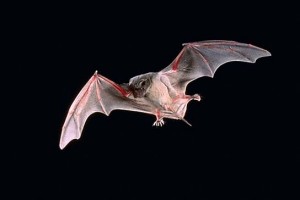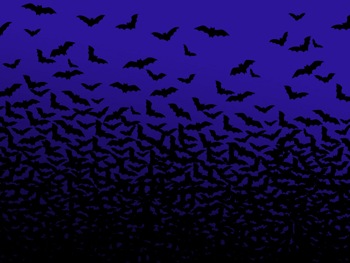Halloween is just around the corner. It’s the time of year when trees change from green to brilliant shades of red and orange, we get to carve pumpkins and decide on a Halloween costume. We think of ghosts and goblins, witches and warlocks, vampires and, of course, bats!
Every teenager can talk to you about vampires. Not just Bram Stoker’s Dracula or even Anne Rice’s LeStat character portrayed by Tom Cruise in the film Interview With a Vampire. The Twilight series of books by Stephanie Meyer has ushered in a new era of vampires—vegetarian vampires that have high moral character. This new and improved breed of fictional vampire doesn’t even immediately decompose into dust when exposed to sunlight—it sparkles!
The real vampires aren’t afraid of the sunlight and they aren’t bats, at least not the ones at my house. During the warm months of the year I am often attacked by relentless vampires with no compassion or regard for humanity. Real vampires live all around us—millions of them—and they want to suck your blood! Sunlight doesn’t stop them. Crucifixes don’t deter them in the least. Our modern day vampire repellent isn’t garlic or holy water—it comes in aerosol cans labeled Deep Woods “Off.”
Our real vampires are not the bats we see flying around at twilight; the vampires are the mosquitoes the bats are eating. Bats are the predators of mosquitoes. Tennessee is home to 11 species of bats and none of them are vampires. All of the bats that live in Tennessee eat insects—lots of insects!
We learn in grade school that bats are not birds. Bats are the only mammals that can fly, and most species hibernate during the coldest parts of the year when no insects are available for a food source. Bats are not blind. They can see exceptionally well and use extremely high pitched sounds to fly safely through complete darkness. Not only can they see in daylight with their eyes like we do, they use a unique kind of sonar called echolocation to “see” with their ears.
Eight of the species of bats living in Tennessee are solitary animals. They hang out under rock ledges, under bridges, and under the bark of hickory trees during the day. Three of the species of bats live in colonies. All bats are important to our environment, but colony bats are especially important to humans. Almost all species of bats are threatened or endangered due to their dependency on the unique circumstances they require for survival. Maternity colonies cluster together to help raise their babies, and hibernating colonies cluster together to conserve warmth. Any human interruptions, even very passive intrusions, can wipe out entire colonies of bats.
One of the biggest maternity colonies of bats in Tennessee lives in Nickajack Cave. Every night during warm months, over 100,000 bats exit the cave at dusk. It takes about half an hour for all of the bats to emerge. They disperse in all directions every night searching for food—mostly mosquitoes and other insect pests—274,000 pounds of insects annually! If we didn’t have bats flying in our night skies, we would have 10 times more mosquitoes! The bats’ environment is protected by regulations that prevent people from entering the cave, but the Tennessee Wildlife Resource Agency allows people to watch the bat flight every night from a specially constructed observation deck.
Nickajack Cave is a nice place to visit, even if you aren’t impressed by bats. It is notable because a famous Tennessee resident, Johnny Cash, went there to commit suicide. Instead of committing suicide in the cave, Johnny Cash had a spiritual experience that caused him to stop his alcohol and drug addictions.
The cave was also a source of saltpeter during the Civil War. Saltpeter was an important ingredient in the manufacturing of gunpowder and was used as fertilizer all the way back to the Middle Ages.
The viewing area for the spectacular bat flight can be accessed by driving East on I-24 towards Chattanooga to Exit 161, Haletown/New Hope Exit. Turn right onto Route 156, travel 5 miles and the Maple View Recreation Area is on the left. The bats start coming out at about dusk every night from April through early October.
So this year as Halloween approaches and you think of bats, think of them not as vampires, but as vampire hunters. Think of them not as the villains but as the heroes—instead of Dracula, maybe they are closer to Buffy the Vampire Slayer . . . Go team Buffy!














